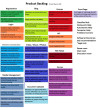From what script is this? Is it from PHP using a PHP/Java bridge, or simply a regular PHP script?
If it is from regular PHP application script, then the IO is the class or object and intValue is the static method of that object.
for example, we can have a class with static method like this
class IO{
public function __construct(){
}
public static function intValue($id){
return(intval($id));
}
}
The class above can duplicate or allow us to test your code.
echo IO::intValue('50');
it should print out 50 which is an integer. Eventhough, I made it like a string.
My example above is extremely simple that in real world application, the class is not even needed due to int() function that can do the job with less code.




